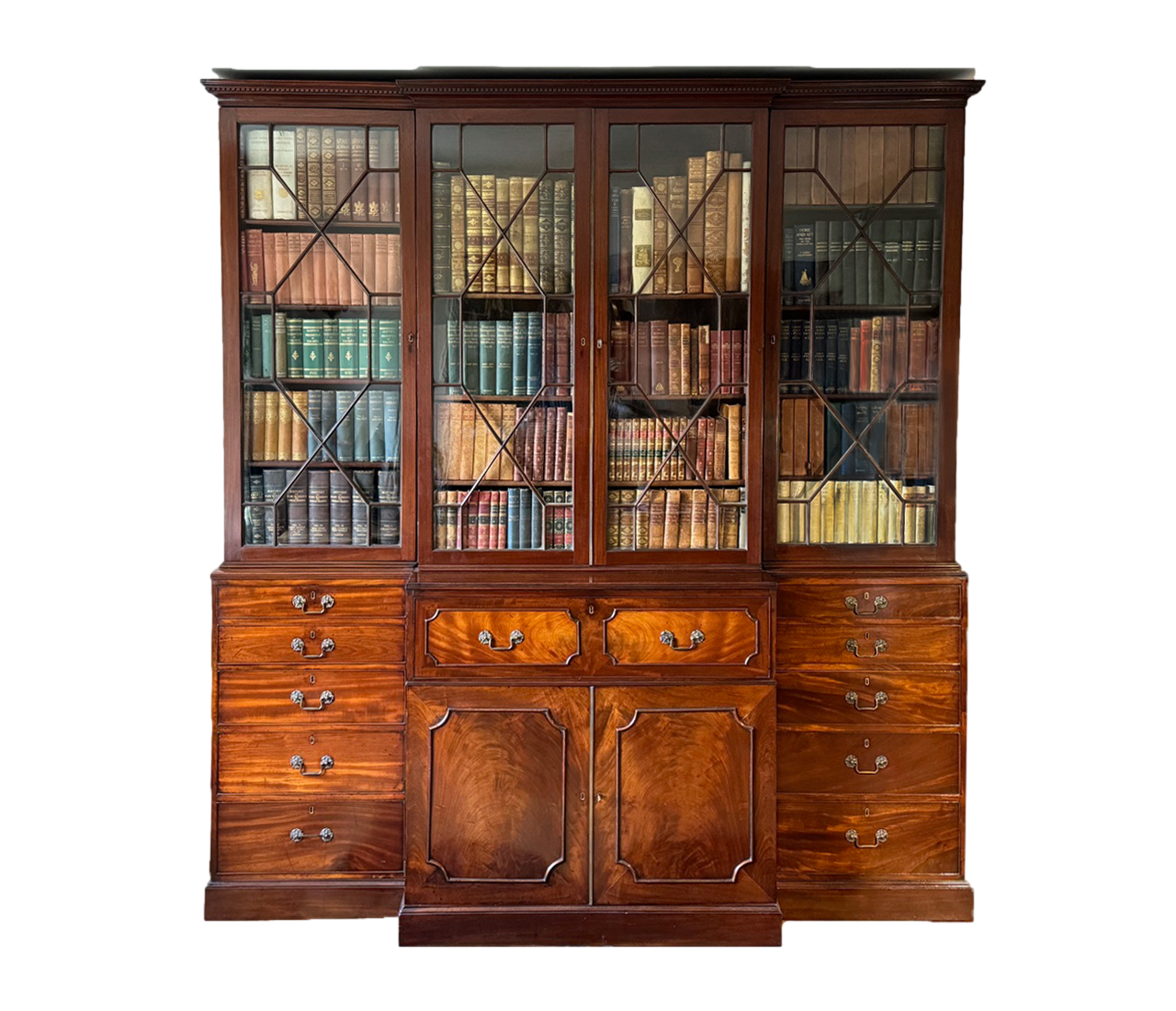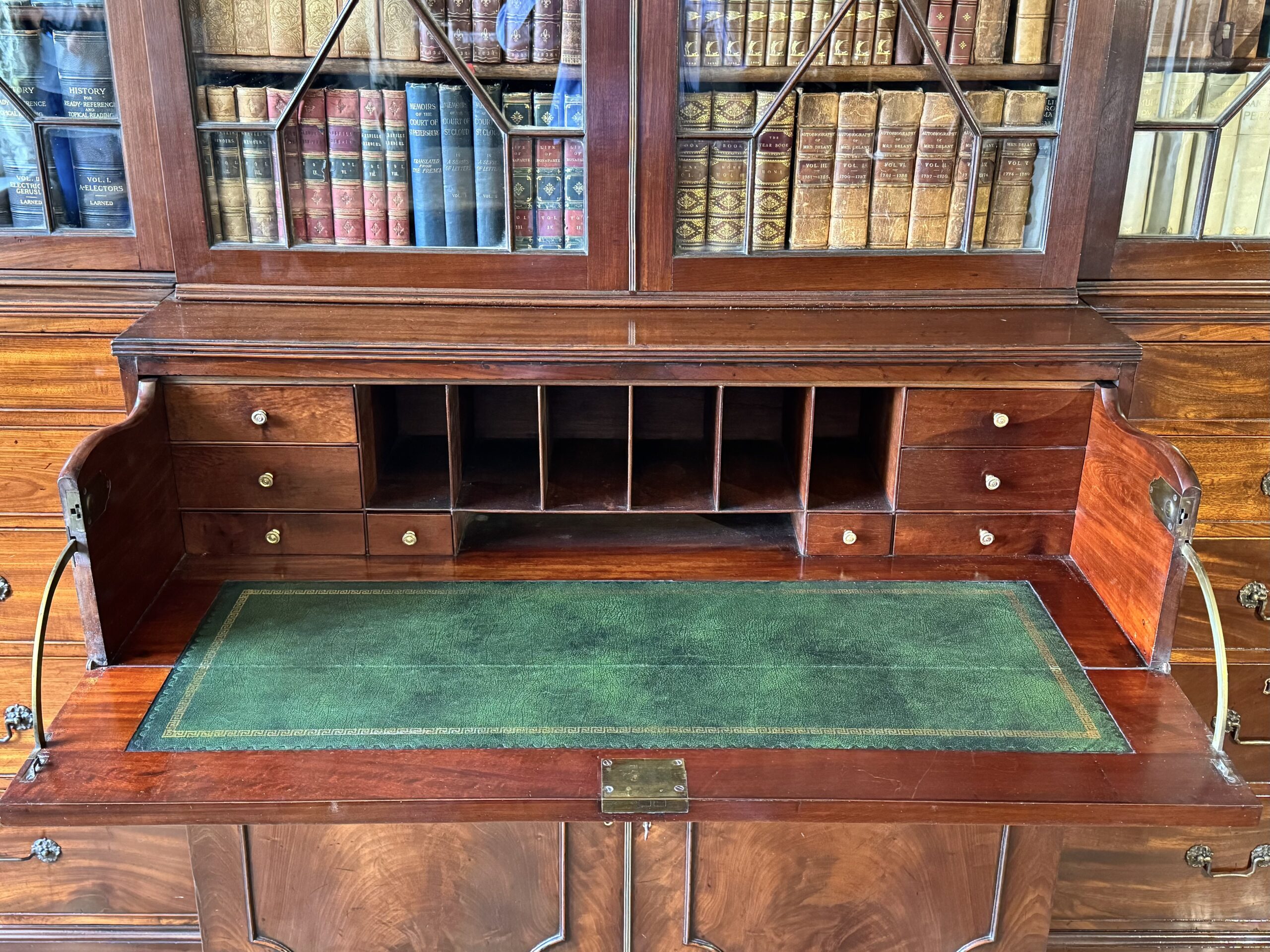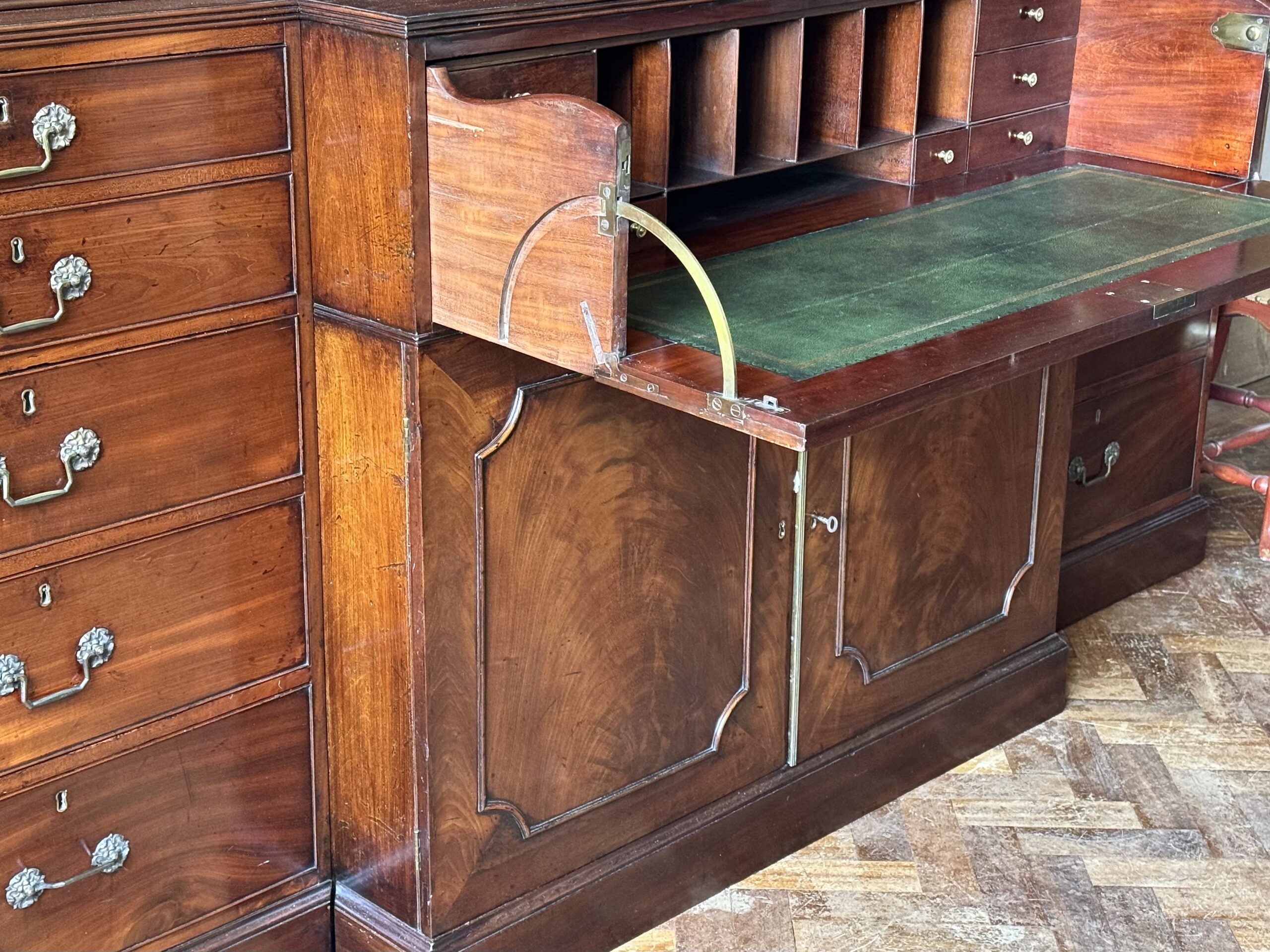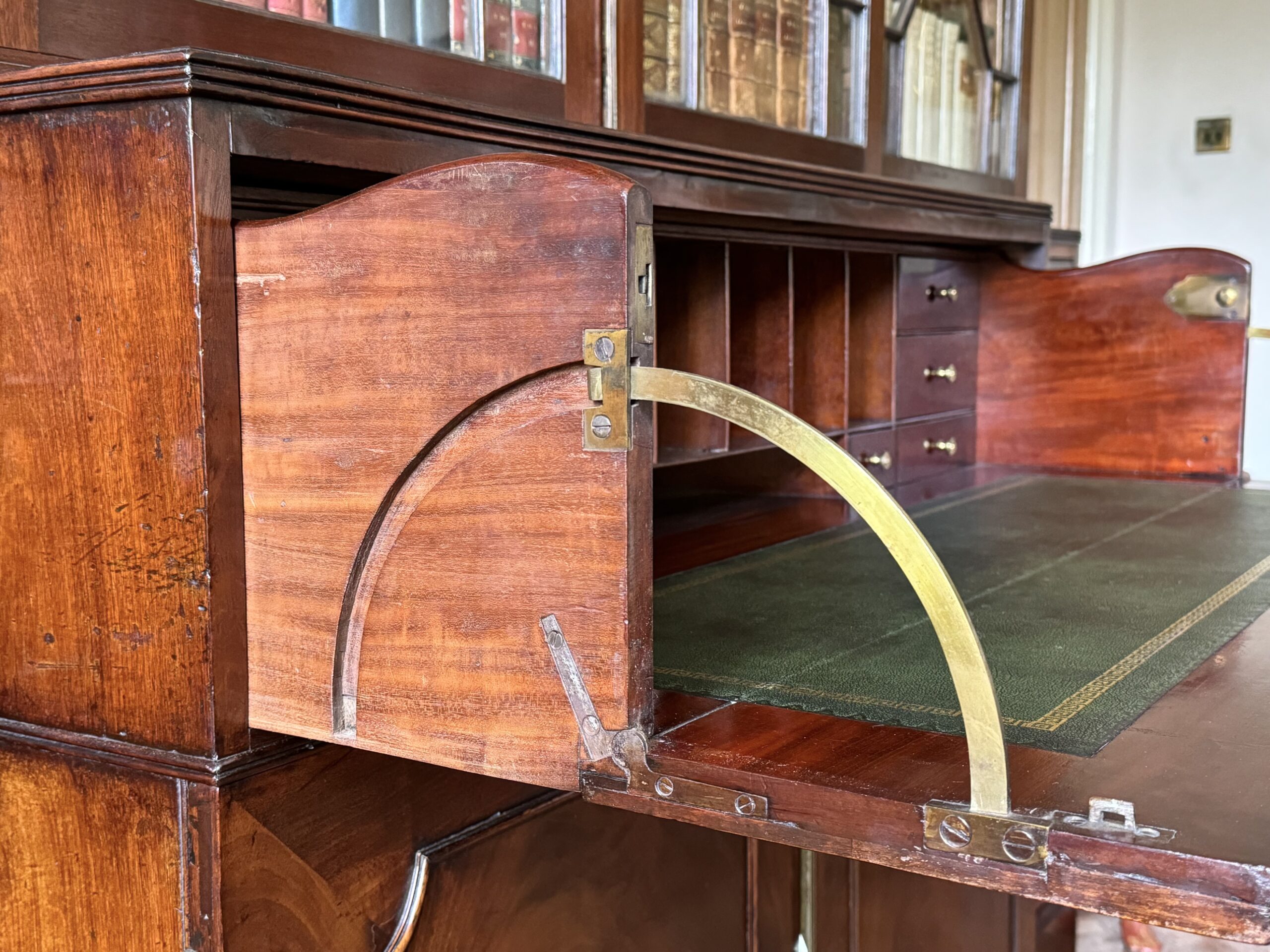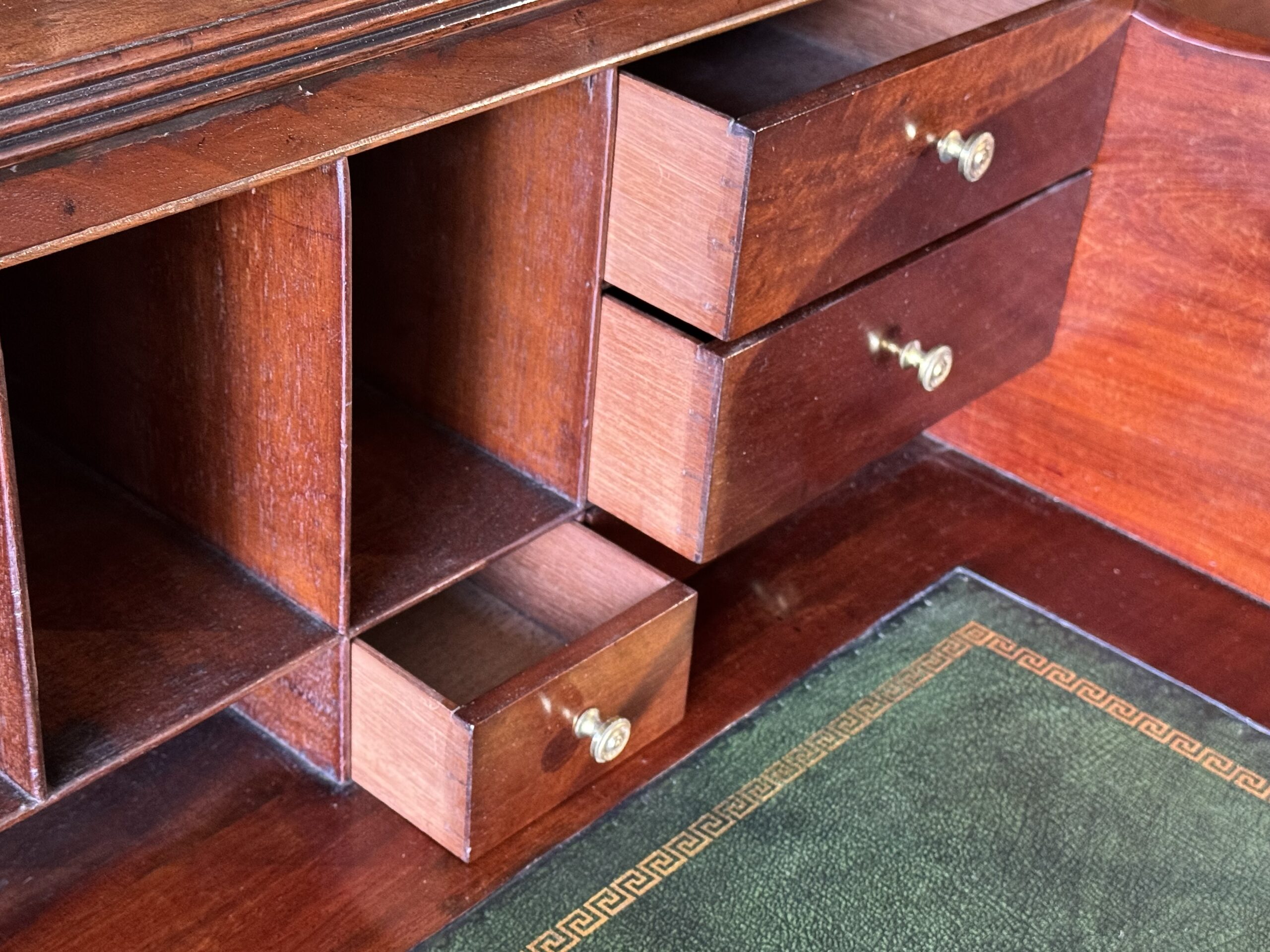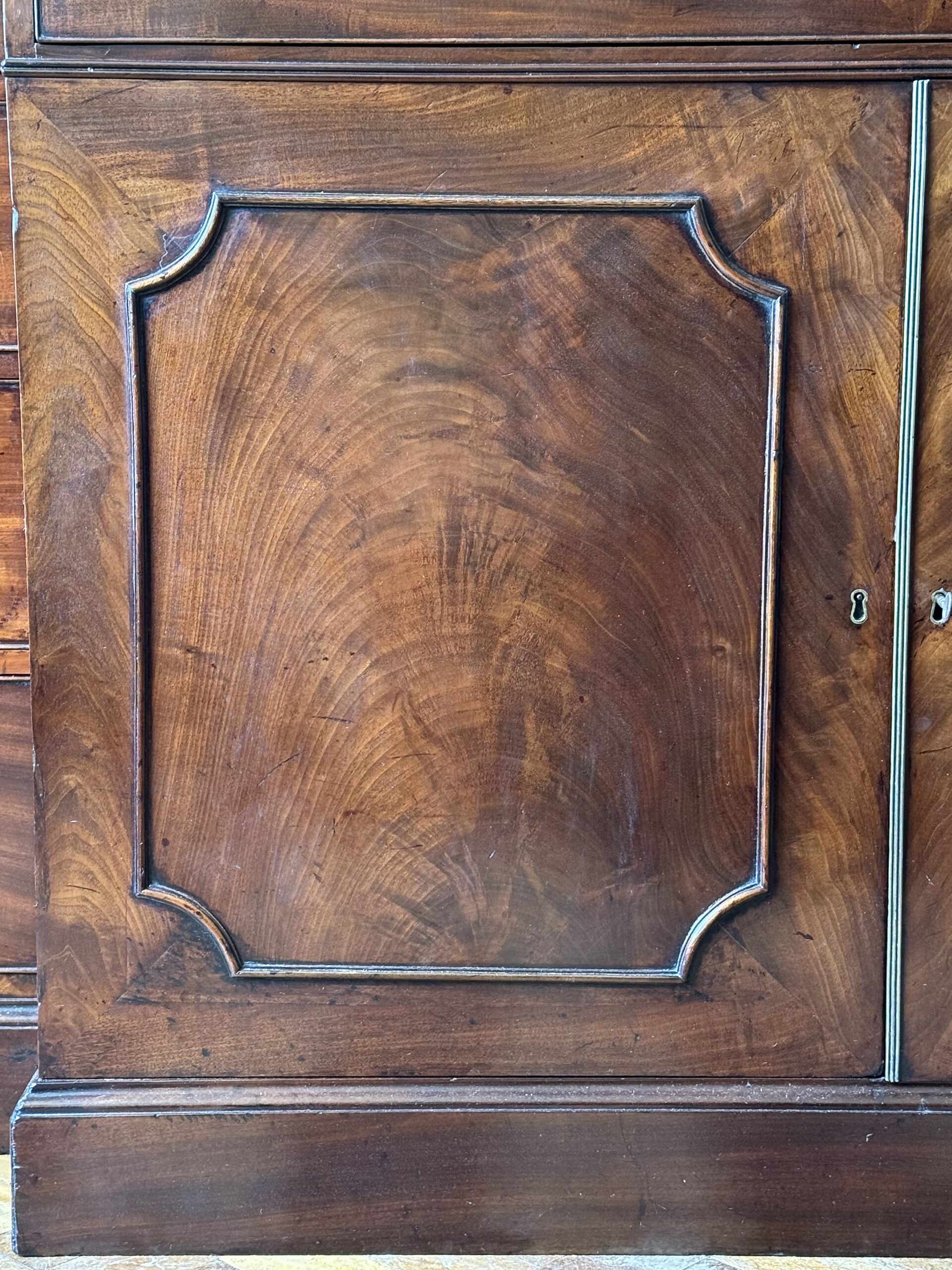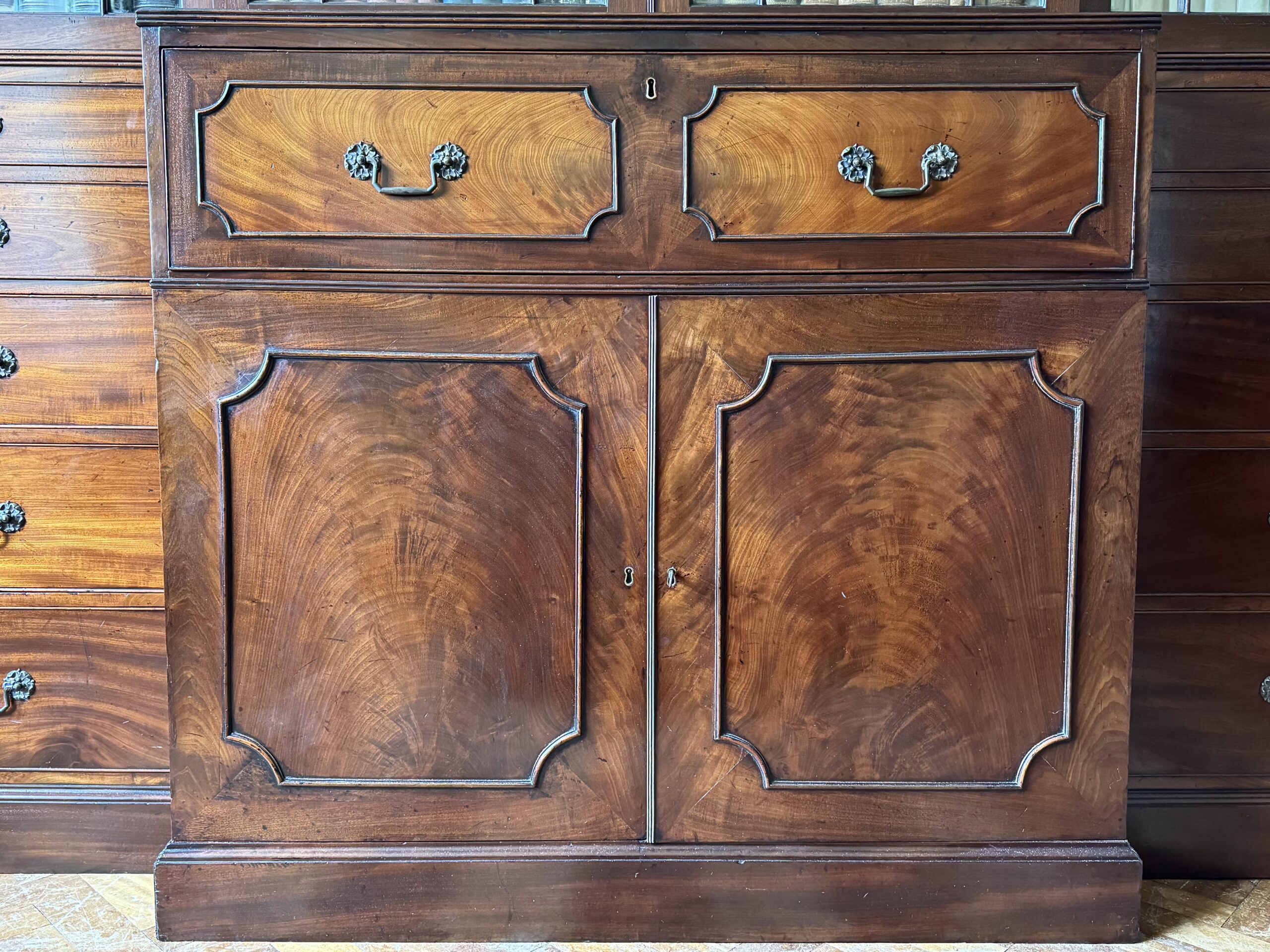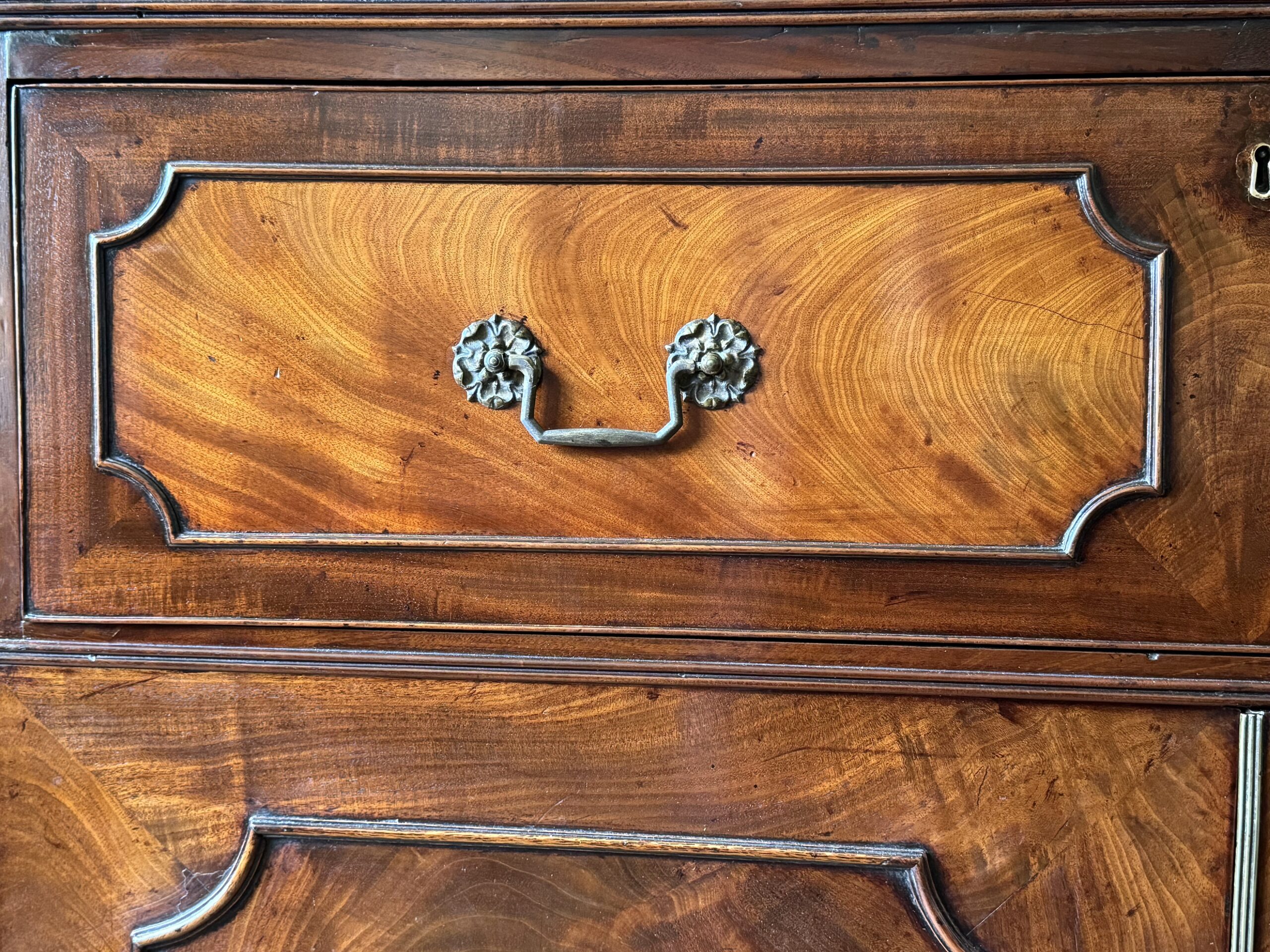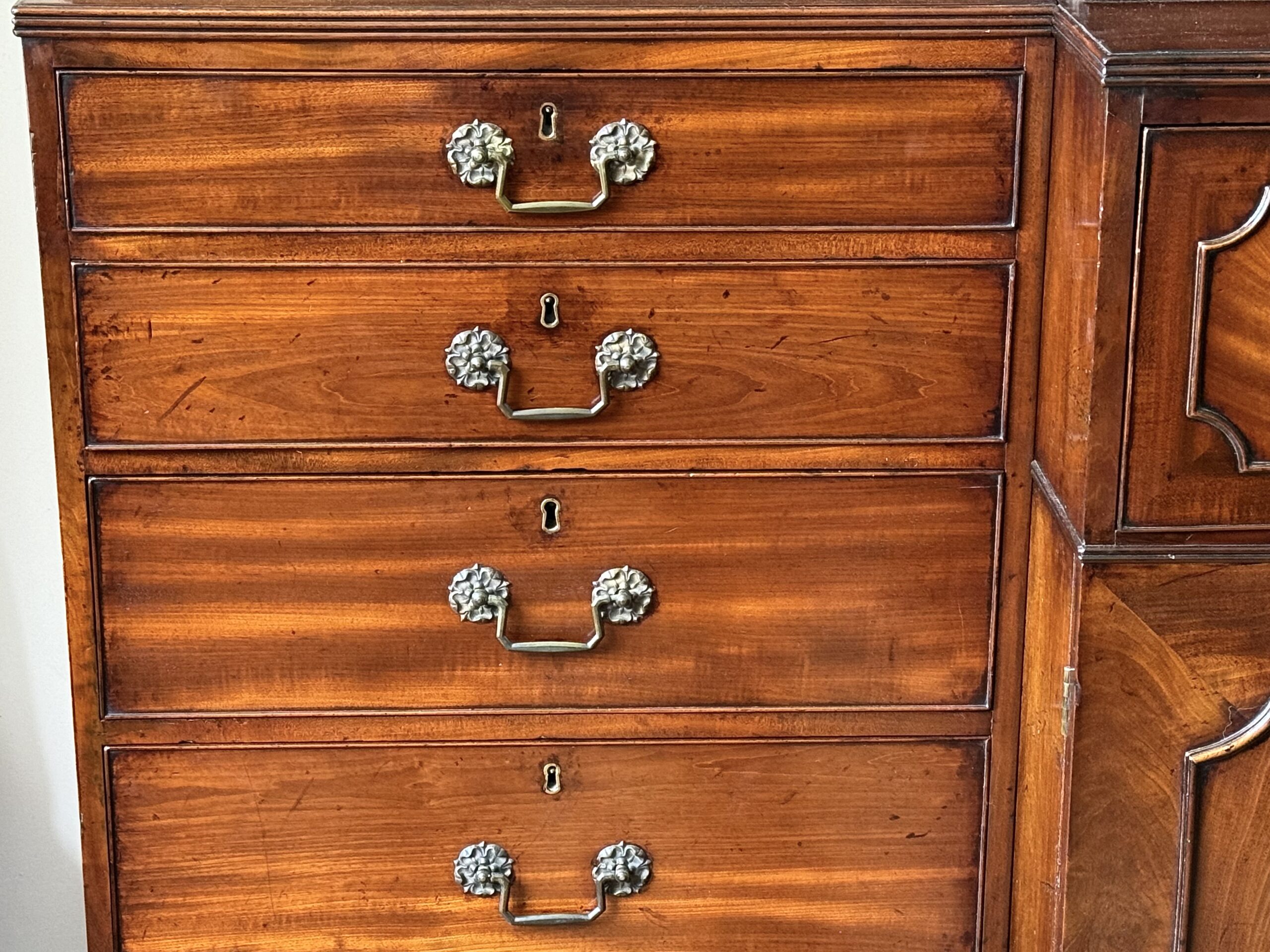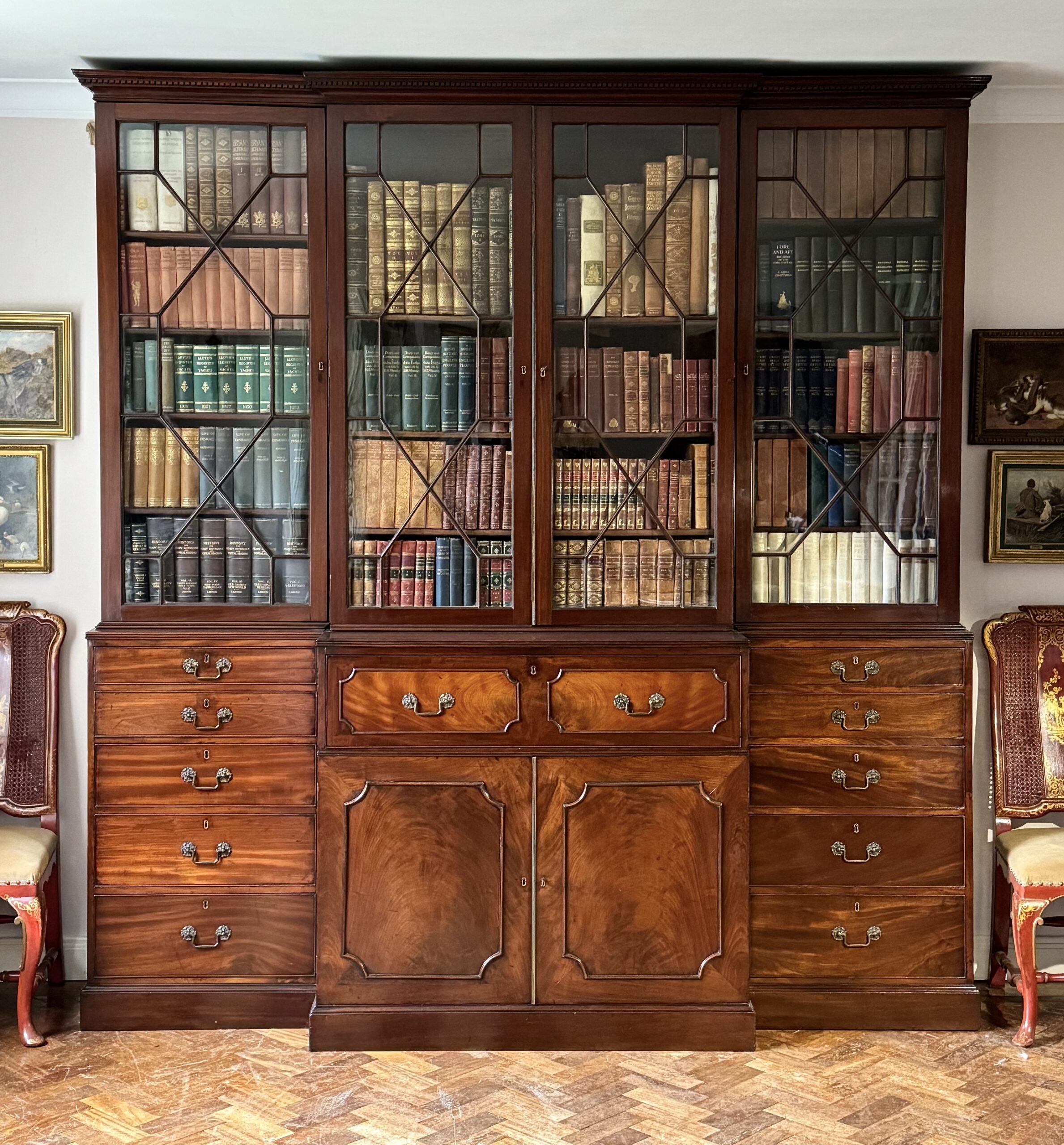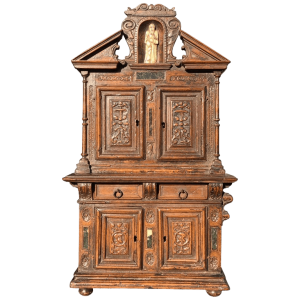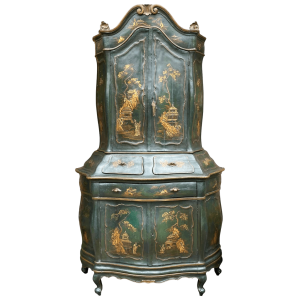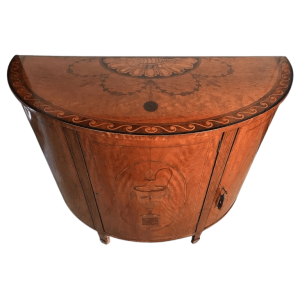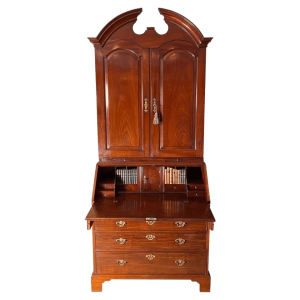Description
A classic Chippendale-period secretaire breakfront library bookcase in well-figured mahogany. Early-George III, circa 1760. Of excellent colour, patina, and condition throughout.
This fine and well-proportioned bookcase is composed of six sections that all separate for ease of transport.
The top section, with adjustable shelving and detachable cornice, is enclosed by four doors with eighteenth-century thirteen-pane astragal glazing bars. The base has a well-fitted secretaire drawer now with a fine-quality green leather gilt-tooled writing surface, over a central cupboard offering ample storage space. Flanked by ten graduated drawers. The whole is raised on a plinth base.
In superb condition ready for your library, drawing/ sitting room or dining room. Over our last 68 years’ trading we have supplied a good number of similar bookcases (but few of this superlative quality) and can add that these bookcases also look good back-lit, for example displaying a dinner service, porcelain,, objets etc.
W: 237 cm.
H: 251 cm.
D: 55 cm.
References:
Ralph Edwards CBE FSA, Shorter Dictionary of English Furniture (Fourth edition 1972) ill. 26, p 59. (Bearing label for Morgan and Saunders.) Note the secretaire drawer.
Thomas Chippendale, The Gentleman and Cabinet-maker’s Director, 1st edition (1754) pl. CVI.C.
Christopher Gilbert, The Life & Work of Thomas Chippendale, Vol. I (1978).
C. Gilbert, The Life and Work of Thomas Chippendale, Vol. II, London (1978), p. 48, fig. 45. Vis. A similar bookcase illustrated.
For comparison: Sold Bonhams London, 2008 for £84,000 inc premium, A George III mahogany breakfront library bookcase in the manner of Thomas Chippendale.
Further reading:
National Trust:
Additional information:
In the 1950s and 1960s some bookcases started out life as Georgian wardrobes with blind doors. Many were of high quality and available at a fraction of the cost of period bookcases with original glazed doors. Examine the astragal glazing bars and glass carefully – both must be mostly original whilst allowing for some historic breakages.
Furthermore, examine carefully where and how the shelves are located as some bookcases have been reduced in height. The bottom and top shelves should be located well clear of the base and top. Shelves that do not rebate into the carcass are another possible warning sign. Be wary of surface-mounted shelves and of any indication of alterations.
Collecting old leather-bound books can be very satisfying in this internet-oriented world… Nothing quite like leafing through an old book while taking time out from your frenetic day. The visual pleasure of a book collection in any room is very rewarding. The presence of a secretaire writing section in the base will add considerable value. Very few blind-door wardrobes or ‘presses’ had this feature.
Checking ceiling height before you commit is important because library bookcases can be very tall. Proportion is another aspect to consider. Period bookcases will be low waisted, have undisturbed hinges, and locks and keyholes must also be looked at for alignment.
The best eighteenth-century library bookcases were inevitably made in finely-figured mahogany. Those made in other woods such as walnut are more than likely to be later versions.
Always best to purchase from a well-established and knowledgeable source. You will be accepting a risk if buying at auction – beware of euphemisms such as: “style; after; in the manner of; by repute; altered; restored; basically”; etc.



